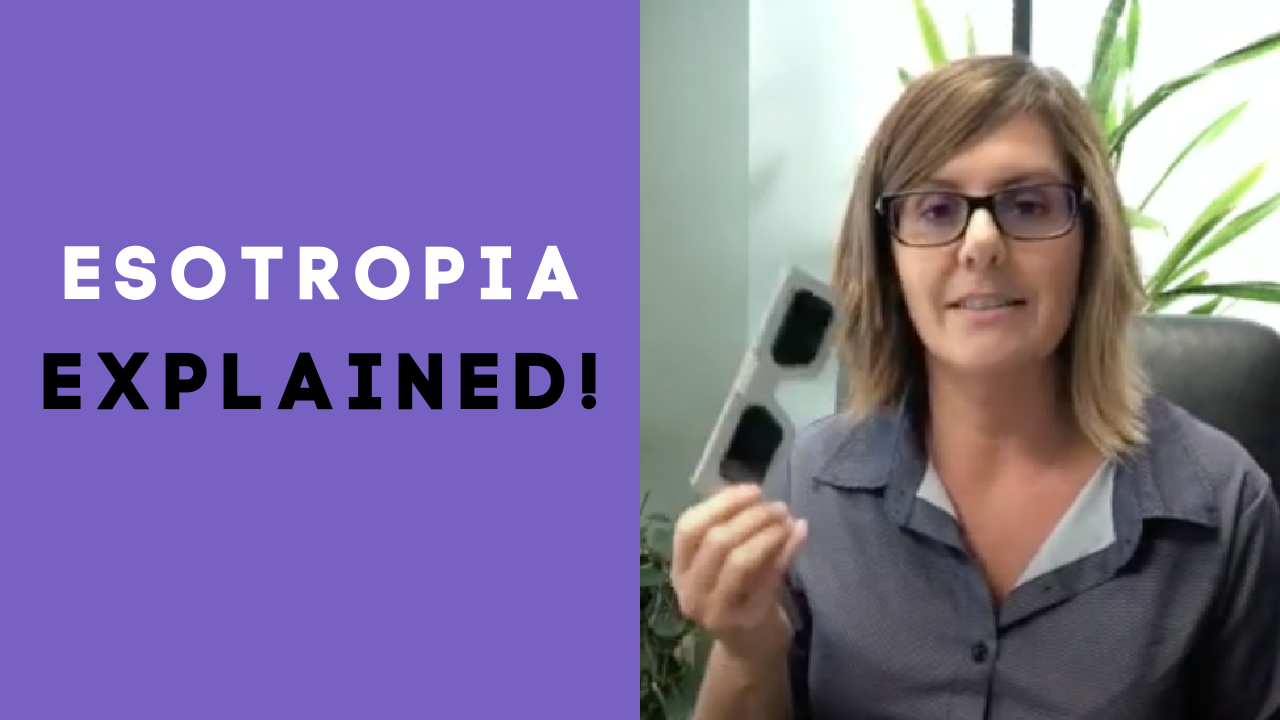Esotropia is a form of strabismus, which is an eye misalignment characterized by an inward turn of either one or both eyes. The eye turn may be occasional or constant, occurring with either near fixation, distance fixation or both. If esotropia is present, the inward turn may affect mainly one eye or can alternate between eyes. Exotropia is the opposite, characterized by an outward turn of the eye or eyes. Dr. Julie explains more in this video.
This condition may occur at any age, but esotropia is the most common type of strabismus in infants. If the inward turn occurs in infants less than 20 weeks old, the condition often resolves on its own. This is true when the misalignment doesn’t happen often or is mild. With that said, if you notice constant eye crossing in a child of any age, they should be evaluated by a doctor at Vision For Life to determine whether treatment is necessary. Treating esotropia before a child is 2 can often be extremely successful.
Effects of esotropia on the visual system will depend on how often the eye turn happens as well as its severity. When an eye or both eyes cross, it will affect the ability of the eyes to work successfully in unison. When new onset esotropia affects older children and adults, they may experience diplopia, which is double vision or a decreased field of vision. There are medical conditions, such as thyroid eye disease and Duane syndrome, that may cause esotropia.
No matter if the eye turn is alternating or constant, Vision For Life has had great success working with patients with this type of strabismus (inward crossing of eyes) or exotropia (“wall-eyed”). We have also treated patients with other forms of strabismus, including upward (hypertropia) or downward (hypotropia). We have even treated cyclotropia, which is a diagonal turning and can be quite complex. At Vision For Life, we can treat an alternating eye turn so patients are able to achieve a better field of vision.
Esotropia and other types of strabismus can run in families. A family history of esotropia does not necessarily mean that future generations will have the same type or severity of the condition. Other risks associated with esotropia may include various neurological and genetic disorders, and systemic disorders like hyperthyroidism and diabetes may also cause ocular misalignment. Prematurity may also increase the risk of esotropia. The treatment includes reestablishment of ocular alignment, binocularity and depth perception. It also alleviates diplopia. If amblyopia or lazy eye exists, it will also need to be treated.
Visit our website at www.visionforlifeworks.com to learn more about all of our services or call us at (618) 288-1489 to discuss how we can help you with you or your loved one’s alternating eye turn. If you or a family member believe you have esotropia, Vision For Life has successfully worked with patients to improve their field of vision and treat this most common form of eye misalignment. Our vision therapy is individualized for each of our patients and designed to correct visual-motor and perceptual-cognitive deficiencies.
